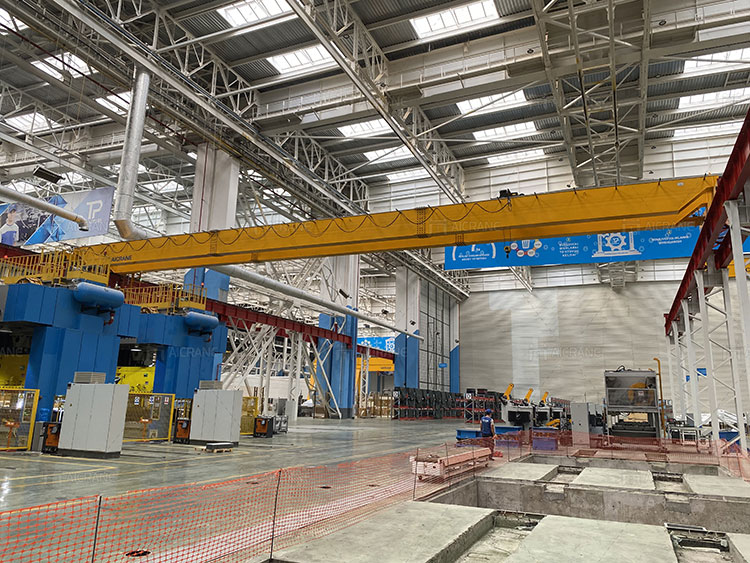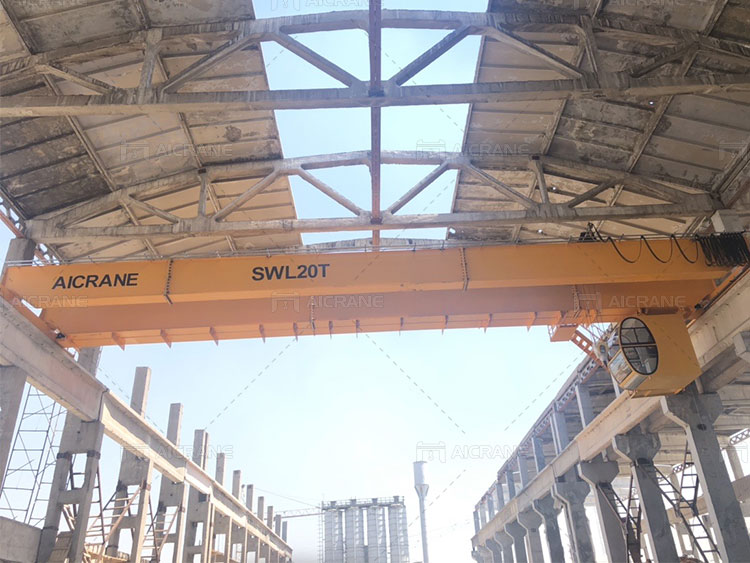Electric Overhead Traveling (EOT) cranes are essential equipment in modern industries, ranging from steel mills to warehouses and manufacturing plants. The demand for high-quality EOT cranes has increased as industries rely on these machines for efficient material handling. But what goes into manufacturing a top-tier EOT crane? This article dives into the meticulous process that ensures durability, safety, and performance.

1. Understanding Customer Requirements
The foundation of manufacturing high-quality EOT cranes begins with understanding the client’s needs. Each project is unique, and requirements vary depending on factors such as:
- Load capacity
- Span and lifting height
- Duty cycle and operating environment
- Specific features like automation or remote operation
Many EOT crane manufacturers often collaborate with clients through consultations, site assessments, and technical discussions to gather detailed information. This stage ensures the EOT crane is tailored to meet the client’s operational goals.
2. Design and Engineering
Once the requirements are finalized, the next step is the design phase. Engineers utilize advanced software tools such as CAD (Computer-Aided Design) and FEA (Finite Element Analysis) to create detailed models and simulations. Key considerations include:
- Structural Integrity: Ensuring the crane can withstand maximum loads without deformation.
- Safety Features: Incorporating anti-sway systems, overload protection, and emergency brakes.
- Efficiency: Optimizing the crane’s components for energy savings and smooth operation.
This phase often includes virtual testing to simulate real-world conditions, allowing engineers to refine the design before production begins.
3. Material Selection
The materials used in manufacturing an EOT crane significantly affect its performance and longevity. High-quality steel is typically chosen for structural components due to its strength and durability. Other materials may include:
- Alloy Steel: For critical parts like wheels and gears.
- Aluminum: For lightweight components to reduce overall weight.
- Insulated Materials: In environments with electrical hazards.
The overhead crane manufacturers ensure that all materials meet industry standards and certifications, such as ISO or ASTM, to guarantee reliability.
4. Component Manufacturing
After the design is finalized and materials are sourced, the production of individual components begins. Key parts include:
- Bridge Girder: The main structural element, fabricated using precision welding techniques to ensure uniform strength.
- Hoist Mechanism: Assembled with motors, gears, and wire ropes to handle lifting operations.
- Trolley System: Built to move smoothly along the bridge, carrying the load with minimal resistance.
- Electrical Components: Control systems, sensors, and cabling are manufactured or procured to ensure seamless operation.
Advanced machinery like CNC (Computer Numerical Control) machines is used to achieve precise dimensions and tolerances.

5. Assembly
The assembly stage involves integrating all components into a cohesive system. This process requires skilled technicians and strict quality control measures. Steps include:
- Bridge and Trolley Integration: Connecting the bridge girder to the trolley system and ensuring proper alignment.
- Electrical System Installation: Wiring the control panels, motors, and sensors for operational efficiency.
- Load Testing: Simulating heavy loads to verify the industrial overhead crane capacity and safety features.
During assembly, manufacturers often adhere to lean production principles to minimize waste and improve efficiency.
6. Quality Control and Testing
High-quality EOT cranes undergo rigorous quality checks at every stage of production. Testing ensures compliance with safety standards and operational specifications. Typical tests include:
- Load Tests: Evaluating the crane’s performance under maximum and dynamic loads.
- Functional Tests: Verifying the responsiveness of controls, brakes, and safety systems.
- Dimensional Checks: Ensuring all components meet design specifications.
- Vibration and Noise Tests: Identifying any irregularities in motion or acoustics.
Certifications such as CE, ISO 9001, or ANSI are often issued after successful testing, providing clients with assurance of quality.
7. Surface Treatment and Finishing
To enhance durability and protect against environmental factors, EOT cranes are subjected to surface treatment processes like:
- Sandblasting: Removing impurities and preparing the surface for painting.
- Priming and Painting: Applying industrial-grade coatings to resist corrosion and wear.
- Galvanization: For components exposed to harsh environments, ensuring rust prevention.
These treatments extend the lifespan of the crane and reduce maintenance requirements.
8. Installation and Commissioning
Once the manufacturing is complete, the crane is disassembled and transported to the client’s site for installation. This process includes:
- Foundation Preparation: Ensuring the site can support the crane’s weight and movements.
- On-Site Assembly: Reconstructing the crane and testing its alignment.
- Final Testing: Conducting operational tests to confirm functionality in the actual environment.
Manufacturers may provide online or on-site guidance to ensure proper installation and commissioning.
9. After-Sales Support
The relationship with the client doesn’t end with installation. Reputable manufacturers offer comprehensive after-sales services, including:
- Regular maintenance schedules
- Spare parts supply
- Upgrades and retrofitting options
- Training for operators and technicians
This support ensures the crane operates efficiently throughout its lifespan and minimizes downtime.
10. Sustainability in EOT Crane Manufacturing
Modern EOT crane manufacturers are increasingly adopting sustainable practices, such as:
- Energy-Efficient Designs: Reducing power consumption during operation.
- Recycling Materials: Using scrap steel or reusing components where possible.
- Eco-Friendly Coatings: Employing non-toxic paints and primers.
Sustainability not only benefits the environment but also aligns with clients’ goals to reduce their carbon footprint.
Conclusion
The manufacturing process for high-quality EOT cranes is a blend of innovation, precision, and commitment to excellence. From understanding customer needs to delivering a fully operational crane, every step is executed with meticulous attention to detail. By investing in advanced technology, skilled craftsmanship, and rigorous quality control, manufacturers ensure their EOT cranes are reliable, efficient, and built to last.
This comprehensive process highlights why choosing the right lifting equipment manufacturer is critical to achieving seamless material handling in any industry.
